Shogi Koma in Tendo - A Samurai Legacy

Tendo, in Yamagata prefecture, is famous for being the place where over 90% of Japan's shogi koma (pieces) are made. A visit to Tendo is an occasion to learn more about the fascination of Japanese chess!
What is the game we have heard of, but no-one we know seems to play? Shogi!
Shogi is a variation on chess, but more challenging. The name derives from the word “Shogun,” so roughly it’s the “Game of Shoguns.”
The rules and strategy provide plenty of scope for tension and drama. Perhaps because it is not easy to be skilled at shogi that people hesitate to claim competence.
Shogi: Japanese Chess
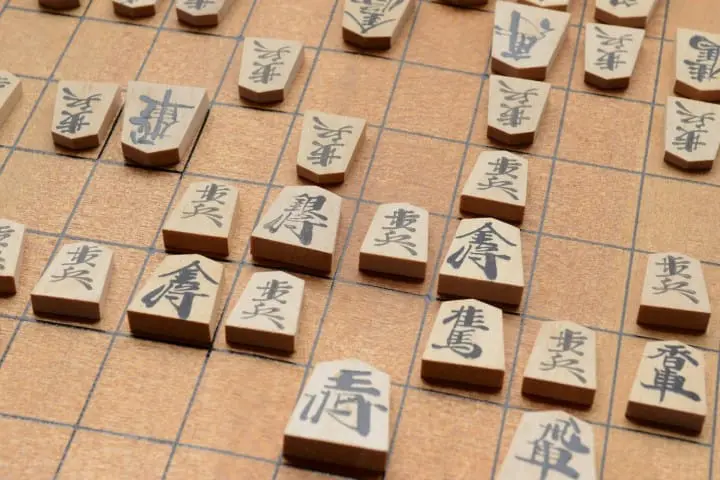
Modern shogi has been played in Japan since the 16th century. It’s an offshoot of chess games that originated in India and migrated to Japan via China and Korea. The earliest evidence of a prior form of the game are 16 shogi pieces unearthed from the Kofukuji Temple grounds in Nara that date from 1058. A piece called the “drunken elephant” has sadly now been left out. The English names used for the pieces are usually those familiar from International Chess.
During the Edo period, the Tokugawa shogunate promoted shogi officially and paid top players. Annual tournaments were held on the 17th day of Kannazuki (10th month of the lunar calendar in use until 1873) and November 17th is still Shogi Day. The Japan Shogi Association regulates professional play and oversees the seven championship titles contested each year.
Shogi Online International Play
Online play has made it possible for people in other countries to raise their skills and in 2010 a 14-year old Shanghai boy, Zhang Xin, qualified to train as a professional. There are women professional players and women’s league tournaments, but somehow no woman has yet managed to become a JSA certified professional kishi (shogi player). The requirement is the professional 4-Dan and those players are salaried by the Japan Shogi Association.
However, one person whose progress is being closely followed is Karolina Styczynska (2014 World Open and European Shogi champion), a young Polish player of 24, who at 3-kyu is actually the first foreigner ever to reach one rank below professional status. Within the brutally strict rules of shogi, she must achieve professional level by age 26. Her interest in shogi was inspired by the character of Shikamaru in the anime series "Naruto". Apart from the challenges of the game, Styczynska has had to get used to sitting in seiza position (the formal sitting posture) on a zabuton cushion for the hours it may take to play a match. She says that having her legs feel uncomfortable is tough on her concentration.
Shogi is played on a 9 row x 9 file rectangular board. Two players each have twenty starting pieces (koma). These are flat, wedge-shaped wooden markers of slightly different sizes pointed towards the opponent. They are all the same color so the only way to distinguish sides is by their orientation. Koma captured from an opponent can be used as your own.
Koma (Shogi Pieces)
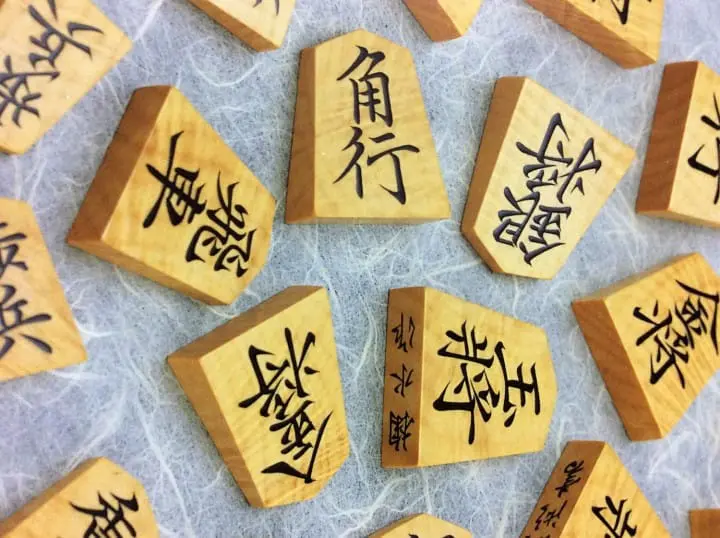
The koma have names and designated movements, however, when they reach the final three rows of the board, they are turned over and “promoted.” The renamed koma become more powerful as their range of movement increases. “Dropping” is a feature that introduces the unexpected as the dynamics of the game are altered by the placement of a captured koma onto an open square.
Starting koma on each side:
1 O-sho (higher-ranking player’s King)
1 Gyoku (challenger’s King)
2 Kinsho - Gold Generals
2 Ginsho - Silver Generals
2 Keima (Knights)
2 Kyousha (Lances)
1 Kakugyo (Bishop)
1 Hisha (Flying Chariot or Rook)
9 Fuhyo (Foot Soldiers or Pawns)
The objective is capture of the opponent’s King. However, in practice, the game continues until the opposing King is checked and has no way to avoid being taken on the next move. Therefore checkmate rather than capture marks the end and the bested player graciously resigns.
The distinctive hand movement for picking up koma and “snapping” them down on the board in an elegant and authoritative way takes some practice itself. The three middle fingers are used to lift the piece, with the thumb tucked under the hand.
Why Is Tendo the Place Where Koma Came to Be Made?
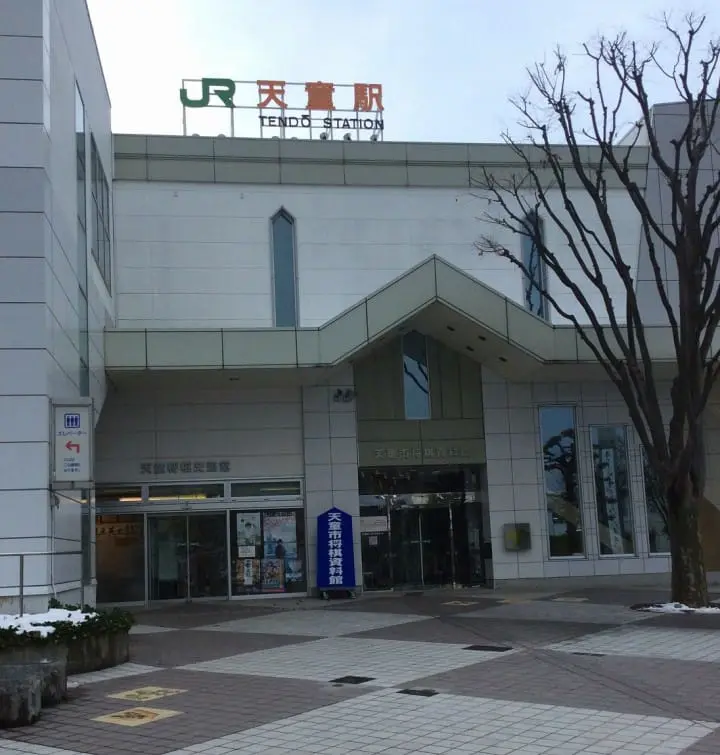
Tendo Station and the Tendo Municipal Shogi Museum (notice the koma-shaped entrance)
Why is Tendo, in Yamagata prefecture, the place that makes over 90% of the wooden shogi pieces produced in Japan?
This was a chance outcome of the split up of the powerful Oda Clan after Oda Nobunaga killed his uncle and seized control of Nagoya Castle in 1555. One of the Oda family branches became the regional daimyo of the Tendo province. Their primary residence was in Edo’s Marunouchi district, but the Edo residence had to be supported by revenues from the Tendo domain lands which were hilly and difficult to farm for rice. So, Tendo samurai started making shogi pieces with local wood and lacquer to make up for insufficient income.
The highest grade koma are finished with raised lacquer lettering delicately applied with fine brushes made of cat or mouse whiskers and then dried and polished.
Incidentally, Hiroshige (*1) received support from the Tendo daimyo and therefore sometimes signed himself Tendo Hiroshige. There is also a Hiroshige Museum in Tendo. (Entrance fee: 600 yen.)
*1... Utagawa Hiroshige (1797 - 1858) - one of Japan's prominent ukiyo-e artists.
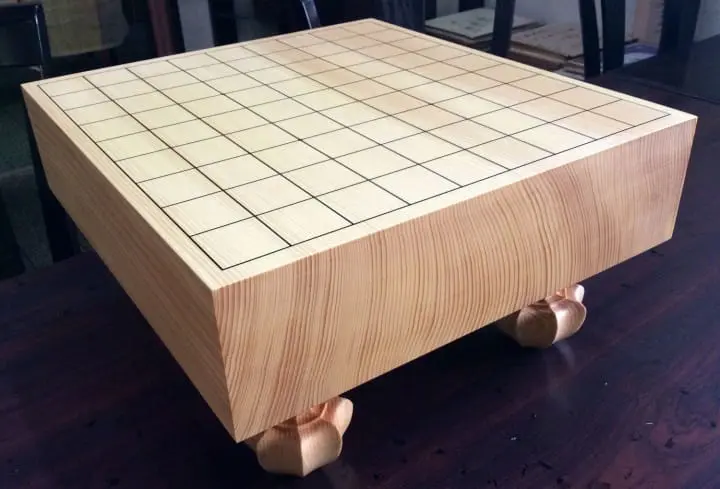
Traditionally Japanese boxwood (kaya) from Miyazaki prefecture was used for the highest quality shogi ban (boards). The tree rings are close together (not to compete with board grid lines) and the color is a light golden color. The sound produced when koma are snapped down on the board is also pleasing. However, because of overcutting, this tree is now protected in Japan and the scarcity means that genuine kaya wood boards are rare. Katsura wood also has a fine grain and, because it is not endangered, it is less expensive.
A Fascinating Shogi Museum!
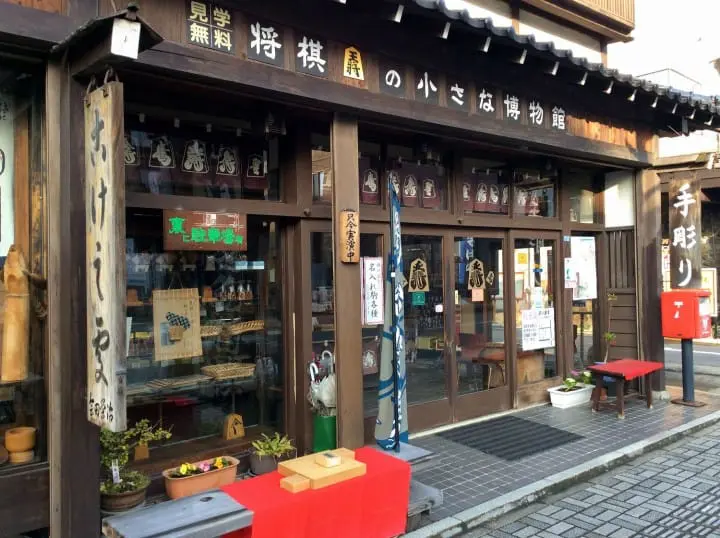
Watch craftsmen making shogi koma at Eishundo.
Easy to find, the Tendo Municipal Shogi Museum is on the street level of the Tendo Station. Although the explanations are mostly in Japanese, fans of shogi will surely enjoy seeing the objects on display. (The entrance fee is 300 yen and the museum is closed on Mondays).
Next door is the Tendo Shogi Koryukan which is an open forum where there are several sets waiting for people to play shogi free.
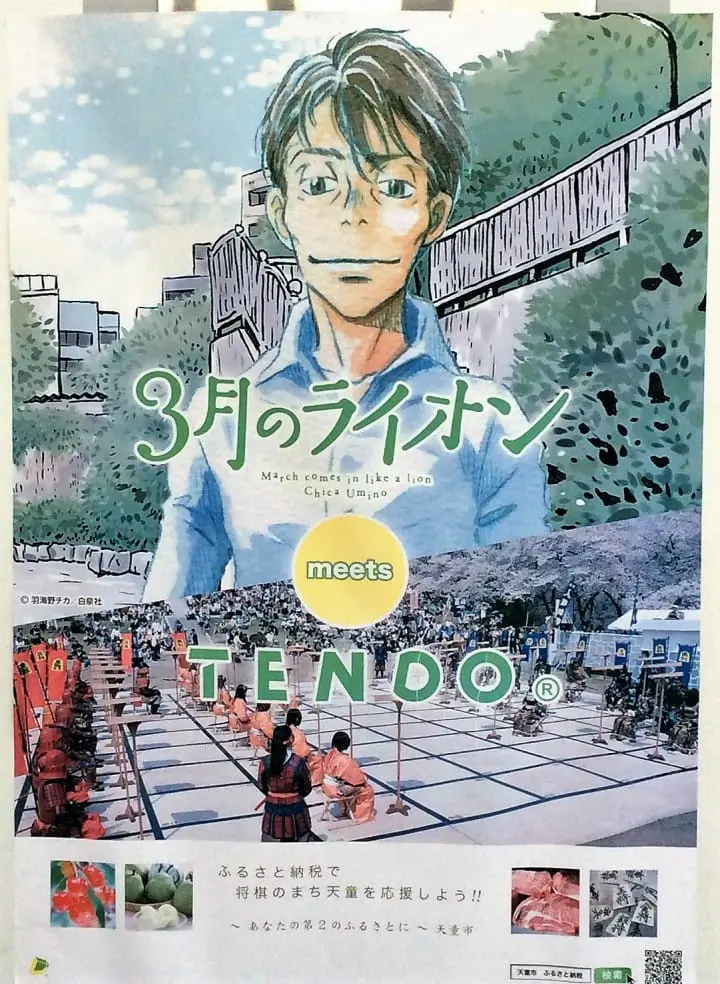
A poster in Tendo announcing the upcoming release of the movie "March Comes in Like a Lion."
Ningen Shogi ("Human Shogi") is a unique outdoor weekend event that takes place during the cherry blossom season in late April every year. People dressed in samurai costume play the game as human pieces!
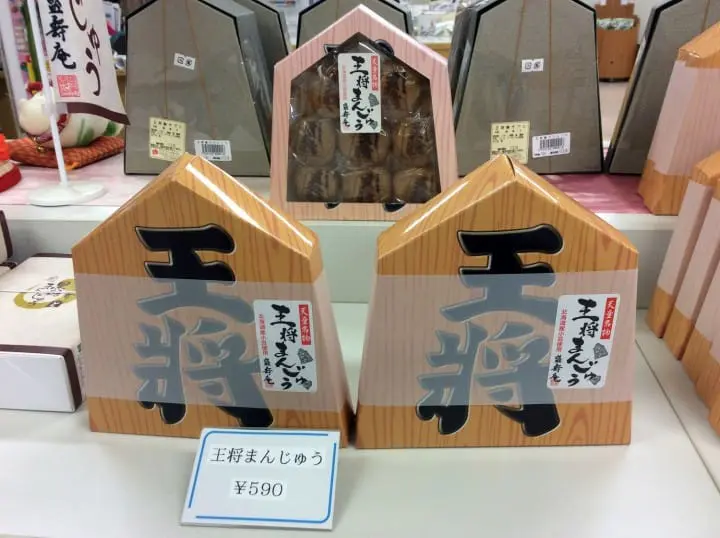
Osho Manju (sweet red bean buns)
In Tendo the shogi theme dominates in the shape of civic design, onsen pools, manju (sweet buns), straps for cellphones, and other items, so shopping for souvenirs is fun.
Tendo Hospitality
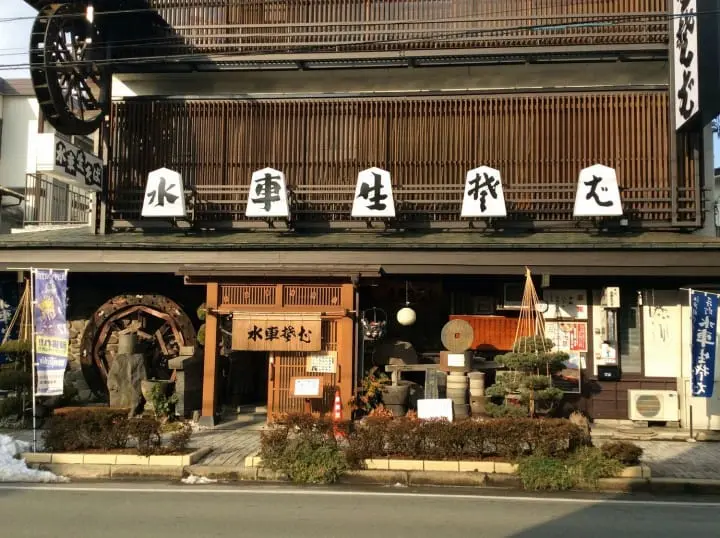
Suisha Namasoba, a soba noodle specialty restaurant in Tendo
Tendo is a welcoming place. It is famous for its many onsen hotels and ryokans which serve delicious foods sourced in Yamagata, including soba, beef and local fruits, as well as Tendo’s prestigious Dewazakura sake and Tendo wines. For cat lovers, the Azumasou ryokan has a cat called Mai, who wears special kitty-sized kimono to greet guests!
English teacher and editor/proofreader living in Tohoku.








































![[Latest] Complete Guide to atmos Exclusive Sneakers and Special Edition Models | Apparel and Upcoming Releases](https://resources.matcha-jp.com/resize/720x2000/2026/01/16-255820.webp)
![[Spring 2026] Enjoy a special zazen experience at Tenryuji Temple, a World Heritage Site in the Arashiyama area.](https://resources.matcha-jp.com/resize/720x2000/2024/01/25-163711.webp)
![[1 hour from Amanohashidate] Experience the charms of Tango Kingdom, the "Food Kingdom" where you can enjoy northern Kyoto!](https://resources.matcha-jp.com/resize/720x2000/2024/08/15-192491.webp)

![[Coupon Available] adidas EVO SL WOVEN New Colors & Water-Repellent Type Now Available](https://resources.matcha-jp.com/resize/720x2000/2026/01/09-255197.webp)